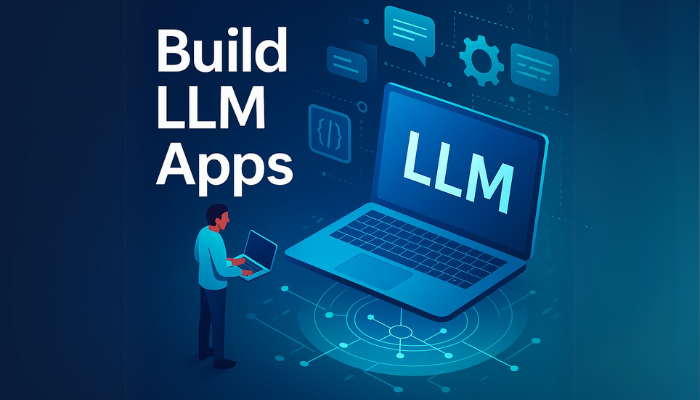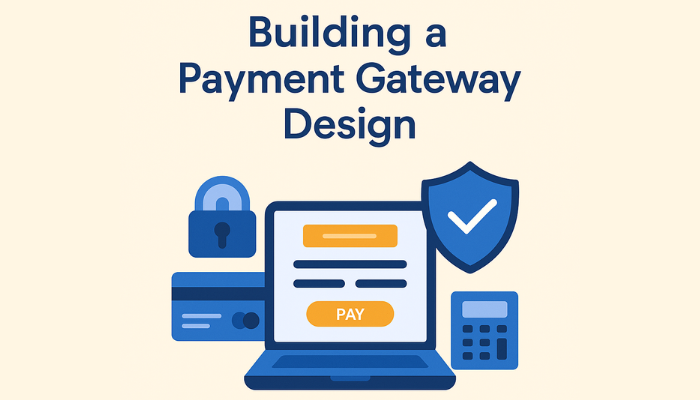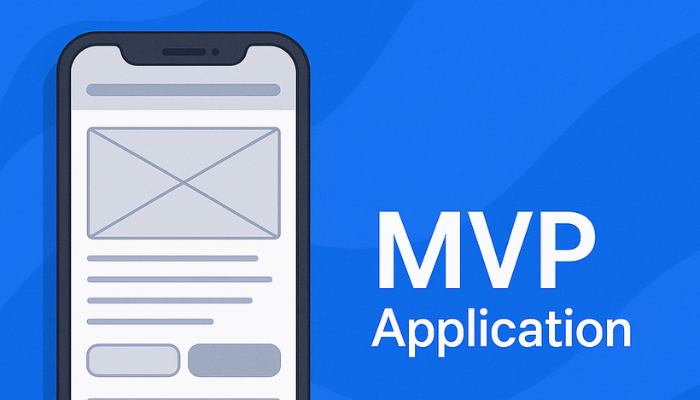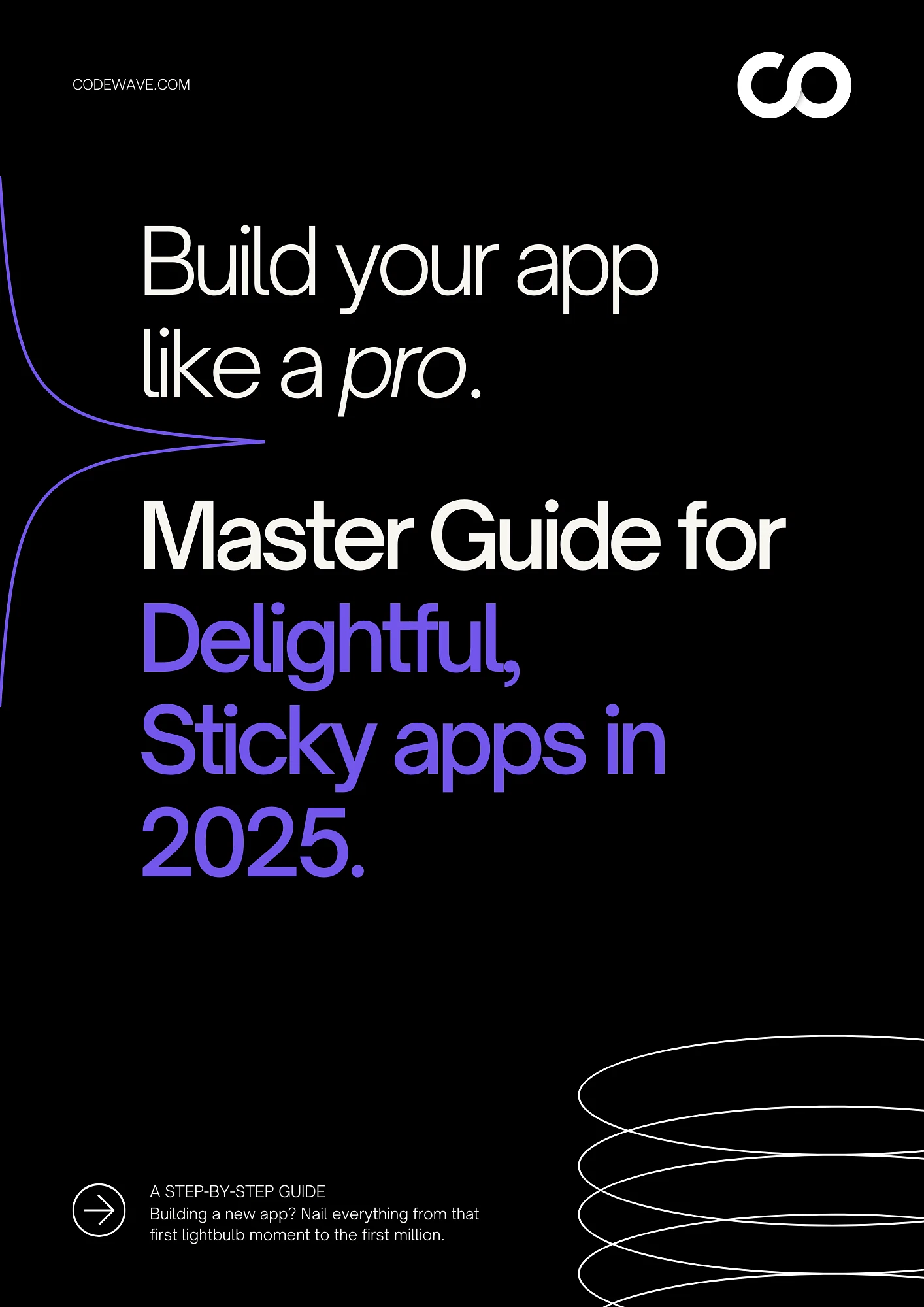Picture this: an app that talks to your users, solves their problems, and helps run your business more smoothly. That’s LLM at work. They’re powered by AI chat models and can automate a ton of tasks, making your life a lot easier.
These apps aren’t just for answering questions, but they can translate languages, handle customer support, and even create content. Businesses that use AI tools like this are seeing up to a 40% increase in productivity.
But building a practical LLM app isn’t as simple as plugging in a chatbot. You need the right infrastructure, prompt engineering logic, and observability tools to ensure consistent performance and business value.
This guide walks you through the essentials: how to architect, build, and operationalize LLM applications that serve real business needs. Let’s dive in!
What are LLM Apps and its Usage in Your Business?
At their core, LLMs (Large Language Models) are AI systems trained on massive datasets to understand and generate human-like text. They analyze the input you provide, like a question or command, and generate context-aware responses using statistical patterns in language.
These models don’t “know” things the way humans do, they predict the next word based on learned patterns. When integrated into your app through APIs, they can process user input, apply predefined prompts, and return accurate, real-time answers to drive business tasks like support, communication, or automation.
So, why is everyone talking about LLM apps? Let’s go over the top reasons why.
1. Automation of Repetitive Tasks
LLM apps can handle standard queries like “What’s your refund policy?” or “How do I reset my password?” without human input. For instance, instead of a customer service rep answering the same five questions every day, the app responds instantly, freeing that rep to manage complex complaints or VIP clients. In HR, it could auto-draft onboarding emails or schedule reminders, reducing administrative clutter.
2. Cut Operational Costs
Imagine a marketing team that needs to produce weekly newsletters, social media captions, and internal updates. Instead of hiring additional copywriters, an LLM app drafts first versions of content that the team can simply review and tweak. This saves time and salary overhead, letting leadership invest more in creative strategy or audience expansion.
3. Scale Without Hiring More
Say you’re launching in three new regions. Your existing team may not be able to handle a surge in support tickets or multilingual queries. An LLM app can scale instantly, responding to thousands of requests without any change in infrastructure. It’s like adding an always-available digital teammate that doesn’t need onboarding or downtime.
4. Personalize User Experience
LLM apps can adjust their tone and content based on user behavior. For example, if a returning visitor browses a specific service repeatedly, the app can tailor messages or recommend next steps that feel relevant and timely. This creates a “remembered” user experience, boosting engagement without manual tracking or segmentation by the team.
5. Ensure Consistent Output
Human responses can vary, leading to inconsistent messaging or errors, especially in high-volume environments. LLM apps ensure every communication adheres to company guidelines, maintaining a consistent tone and accuracy across channels. This is critical for industries like finance or healthcare where compliance and precision are non-negotiable.
Key Components of LLM Applications
For an LLM app to work, it relies on a few key elements coming together. Let’s dive into the building blocks of LLM apps:
1. Chat Models
At the heart of every LLM app is the chat model, the AI engine trained to understand and generate language. These models process input text and produce relevant, context-aware responses, enabling natural conversational experiences.
2. APIs (Application Programming Interfaces)
APIs serve as communication bridges between your application and the LLM service. They facilitate sending requests to the model and receiving generated responses, allowing seamless integration of AI capabilities into your existing systems.
3. Integration Frameworks
Integration Frameworks: These frameworks connect your LLM app with enterprise tools, databases, and internal workflows, ensuring seamless data exchange and functional cohesion. Tools like Zapier enable no-code automation, while MuleSoft supports complex, enterprise-grade integrations at scale.
4. Prompt Templates
These structure user input to guide LLMs toward generating accurate, context-aware responses. Well-crafted prompts reduce ambiguity and improve output quality.
Tools & Best Practices:
- PromptPerfect and FlowGPT help design, test, and refine prompts with real-time feedback.
- Use role-based instructions (e.g., “Act as a recruiter”) for better contextualization.
- Keep prompts concise but specific—include format expectations and tone guidelines.
- Test iteratively across edge cases to ensure consistency in responses.
5. Backend Infrastructure
The backend supports the application’s core operations, including data storage, processing power, security, and uptime management. A scalable and resilient backend infrastructure ensures your LLM app delivers consistent performance even under heavy load.
Ready to bring your LLM app to life? Let’s walk through the steps to get you started!
Step-by-Step Guide: Setting Up LLM Apps
Setting up LLM apps might seem complex at first, but don’t worry, we’ll break it down step-by-step. By following these simple instructions, you’ll have your app up and running in no time.
Let’s dive into the process and get started with the essentials!
1. Identify Strategic Objectives and Use Cases
Begin by defining clear, measurable business goals that your LLM app must achieve. Start by asking: What business outcomes are you targeting?
- Reduce operational costs through automation
- Improve customer experience with faster, contextual responses
- Accelerate internal processes like documentation or reporting
- Free up high-cost talent from repetitive tasks
Link these goals to specific metrics. For example, if your goal is cost reduction, identify how much manual effort can be automated, such as handling 30% of customer inquiries without human intervention. This quantifies the expected ROI and justifies investment.
Next, prioritize high-impact, low-friction use cases. These are areas where LLMs can deliver value fast, without major process overhauls. Good examples include:
- Automating tier-1 support for FAQs
- Generating legal drafts or marketing copy
- Summarizing internal documents or customer feedback
Also consider technical feasibility. Ask: Do you have clean data? Can you integrate with your existing stack without re-architecting it?
Finally, ensure use case selection aligns with business priorities. If your leadership is focused on retention, use LLMs to personalize outreach. If cost efficiency is the mandate, automate manual workflows.
Document your chosen use cases and expected outcomes upfront. This brings clarity across stakeholders and ensures every technical decision maps back to business value.
2. Evaluate Organizational Readiness and Risk Factors
Before deploying an LLM app, take a step back and assess whether your organization is truly ready to support it, technically, operationally, and securely. LLMs are only as good as the data they work with. If your internal data is fragmented, outdated, or poorly labeled, the app will underperform. Start by reviewing your data pipelines:
- Do you have access to clean, structured, and recent datasets?
- Is sensitive information segregated or protected under proper access controls?
- Are you aware of potential compliance obligations, HIPAA, GDPR, etc., involved in using this data?
Security posture is next. LLMs can surface or infer sensitive information. Evaluate:
- Your cloud infrastructure security
- Access and identity controls for app usage
- Logging and monitoring systems for model outputs
Then look at your internal capabilities. Ask yourself:
- Does your team have hands-on experience working with LLMs or similar AI systems?
- Can your engineering or IT function support model integration and scaling?
- Do you need to bring in external support for audit, security review, or deployment planning?
To simplify this assessment, you can take up Codewave’s AI Audit service. It’s designed to help leadership teams evaluate technical feasibility, data readiness, and risk exposure before committing resources to full-scale implementation.
3. Choose a Model with Business Constraints in Mind
Every LLM app starts with choosing the right foundation model, but this choice isn’t just about performance metrics. It’s a business decision with long-term implications.
Start by mapping the model’s strengths to your use case. Not all models are optimized for cost-efficiency, latency, or multilingual processing. Then evaluate the vendor’s ability to meet your enterprise constraints:
- Compliance: Is the model compliant with standards like SOC 2, HIPAA, or ISO 27001?
- Data Sovereignty: Can you host the model or its APIs within your geographic or legal boundaries?
- Scalability: Will the model handle increased workloads as adoption grows?
- Support & SLAs: Can the vendor ensure uptime, rollback, or model explainability when needed?
- Total Cost of Ownership (TCO): Consider token costs, infrastructure requirements, and integration expenses, not just licensing.
If regulatory or operational sensitivity is high, explore open-source models like LLaMA or Mistral that offer more control, or fine-tune proprietary models in a private environment.
Curious how enterprises fast-track AI adoption for real ROI? This guide breaks it down with a practical framework. Read it here.
4. Design Effective Prompt Engineering Frameworks
A well-structured prompt is the foundation of a reliable LLM app. It shapes how the model understands user intent and directly impacts the quality of the response.
- Define Clear, Repeatable Input Patterns
Standardize how you write prompts, use consistent language, structure, and instructions. For example, always start with a clear role (“You are a customer support agent”) followed by a specific task (“Summarize this complaint in two sentences”). This consistency improves output quality and reduces training time.
- Work with Business Stakeholders
Collaborate with teams like operations, legal, and customer support. Their input helps identify the language, compliance needs, and edge cases the model must handle. This ensures your prompts are not just technically sound, but also operationally relevant.
- Build a Feedback and Testing Loop
Once your prompts are live, monitor their performance. Are the responses aligned with your brand tone? Are they accurate? Set up simple feedback workflows so teams can flag weak outputs and suggest improvements.
- Control Risk, Ensure Compliance
Prompts must reflect your industry’s regulations. This includes how customer data is referenced, how advice is framed, and how actions are recommended. If your app is in healthcare, finance, or legal, this step is non-negotiable.
5. Build Robust Integration and Workflow Automation
Your LLM Application must plug into your existing systems and workflows without disrupting operations. That means integrating it into the tools your teams already use; CRMs, ERPs, communication platforms, and more.
- Integrate Directly into Existing Platforms
Your LLM app should easily plug into tools your team already uses: like Salesforce, Slack, or your internal dashboard. Using REST or GraphQL APIs and ready-made connectors helps you do this quickly, without changing your current systems. It saves time and makes it easier for teams to start using the app right away.
- Automate Repetitive Tasks
Identify tasks your team does repeatedly, email summarization, support ticket tagging, meeting transcription. These are ideal use cases for LLM automation. Embedding the app in these flows boosts efficiency and allows staff to focus on higher-value work.
To scale this efficiently, you need more than just a good model; you need a solid foundation. That’s where structured process automation comes in. We’ve helped enterprises streamline workflows across departments with tailored automation systems that integrate cleanly, adapt quickly, and deliver measurable outcomes.
- Maintain Business Continuity
Integration should not interrupt day-to-day work. Design rollout plans that run parallel to current systems. Start with a pilot in a non-critical workflow before scaling to customer-facing operations.
- Track ROI From Day One
Establish clear KPIs, response time reduction, human handoff rates, or time saved. These metrics validate that your integration is solving real problems, not adding complexity.
6. Validate Business Value Through a Controlled Pilot
Before scaling your LLM app, run a focused pilot in a high-impact area. The goal here isn’t just testing functionality, it’s proving strategic value with minimal risk.
Start with a department where the use case is clear and measurable, such as customer operations, legal review, or internal support are good candidates. Keep the scope lean to avoid unnecessary complexity.
During the pilot:
- Test real-world workflows under realistic conditions, not lab setups. This helps you validate if the app adds efficiency without disrupting business-as-usual.
- Capture user insights continuously, what accelerates them, what creates friction.
- Track business metrics like resolution time, SLA adherence, and effort reduction, not just model performance.
- Surface early risks like broken integrations, misaligned prompts, or quality issues.
To de-risk this phase further, ensure robust test coverage from day one. That’s where Codewave’s QA & Automation Testing comes in, helping you simulate real conditions, catch edge cases early, and maintain release confidence across every iteration.
7. Optimize Continuously for Cost Efficiency and Performance
Now that your pilot has proven the app’s value, it’s time to shift from validation to optimization. At this stage, your focus moves from testing impact to improving efficiency, cost, and quality at scale.
Focus on these three areas:
- Token Consumption: If a chatbot gives long-winded replies, you’re paying more for each interaction.
Example: Trim down a support chatbot’s 100-token replies to 40-token summaries without losing clarity. This reduces your monthly OpenAI bill by up to 30%. - Output Quality: High cost only makes sense if the model delivers accurate, valuable responses.
Example: If a lead qualification bot frequently mislabels prospects, refine the prompt to prioritize job title and industry. This improves sales outcomes and justifies spending. - User Feedback: Internal users often catch what metrics miss. Use their feedback to fine-tune.
Example: If HR complains the onboarding bot skips policy updates, revise the prompt to include compliance content automatically.
These insights help you iterate intelligently. Update prompt templates, rewire decision flows, or choose lower-cost models without compromising utility.
8. Enforce Enterprise-Level Security and Compliance Controls
Security isn’t a checkbox, it’s a continuous responsibility, especially when your LLM app handles proprietary data, customer conversations, or regulated workflows.
Here’s how to build trust into every interaction:
- Encrypt all data in transit and at rest: Whether it’s a financial summary or a healthcare record, encrypting user inputs and model responses is non-negotiable.
- Control who gets access and why: Set up role-based access so only the right teams can view, fine-tune, or audit the LLM behavior.
- Maintain detailed audit logs: Every query, prompt change, or system update should be traceable. This helps during compliance audits and incident investigations.
- Mitigate model bias: Use curated datasets and real-world feedback to continuously train your model against unintentional bias, especially in hiring, healthcare, or legal use cases.
But even the best internal processes can miss blind spots. That’s where Codewave’s Penetration & Vulnerability Testing adds real value. It proactively simulates cyberattacks to identify weak points in your LLM deployment before attackers can.
9. Scale with a Governance Framework and Change Management
Scaling your LLM app isn’t just about pushing it organization-wide, it’s about doing it in a way that’s secure, consistent, and measurable. This requires a proper governance structure, not ad-hoc policies.
Here’s how to approach it:
- Adopt a recognized governance framework
Start with models like COBIT (Control Objectives for Information and Related Technologies). It helps you define clear roles, accountability, and control objectives, so you can track who owns what, manage risk, and align LLM usage with business strategy.
- Use domain-specific models like Google’s ML Governance Framework
This includes practical steps like dataset versioning, fairness testing, and reproducibility tracking. It helps avoid biased outputs and ensures your LLM apps perform consistently, even as your data evolves.
- Build a Center of Excellence (CoE)
Your CoE should document best practices, define internal review processes, and act as a central knowledge hub. It’s not just about centralizing control, it’s about accelerating adoption the right way.
- Lead structured change management
Run internal campaigns, onboard teams gradually, and offer clear SOPs. Use usage metrics and stakeholder feedback to refine continuously.
Scaling smart is just step one, keeping things running smoothly is next. Here’s how Codewave handles application maintenance with strategy, speed, and structure.
Common Pitfalls in Deploying LLM Apps and How to Avoid Them
Challenge 1: Over-Customizing Too Early
One common mistake is trying to fully customize or fine-tune your LLM app before you clearly understand the specific use cases it needs to address. This approach often leads to wasted time and budget, as you may be optimizing features that are not yet proven to deliver business value. Over-customization at an early stage can delay deployment and reduce overall agility.
How to Avoid It: Start by focusing on prompt engineering and running pilot tests with limited data. This allows you to validate the app’s core functionality and gather real user feedback. Once you have a solid understanding of the key use cases, you can incrementally fine-tune the model. This staged approach saves resources and accelerates time to value.
Challenge 2: Ignoring Change Management
Many organizations underestimate the importance of managing the human side of deploying new technology. Even if your LLM app is technically advanced, it will fail to deliver results if users are not trained properly or if communication about its benefits and usage is unclear. Without buy-in from the team, adoption rates will be low, limiting your return on investment.
How to Avoid It: Implement a structured change management plan that includes thorough user training and ongoing communication. Engage stakeholders early and provide continuous support to help teams understand how the app fits into their daily workflows. Clear messaging and training ensure higher adoption and more successful integration into business operations.
Challenge 3: Underestimating Data Drift
Data drift occurs when the patterns of data your LLM app receives change over time, which can cause the model’s performance to degrade. This is a significant risk because business environments are dynamic: customer behavior, market conditions, or product offerings evolve, and if your app isn’t updated, its outputs become less accurate and less useful.
How to Avoid It: Plan for regular retraining cycles and conduct frequent data audits to identify shifts in input data early. Monitoring data quality and refreshing your model on a scheduled basis will maintain the app’s accuracy and reliability, protecting the value of your investment.
Challenge 4: Skipping Security and Compliance Reviews
LLM apps often handle sensitive business or customer data. Failing to conduct thorough security assessments can expose your organization to serious risks, such as data leaks or malicious prompt injections. Additionally, non-compliance with data protection regulations can result in costly penalties and damage your brand’s reputation.
How to Avoid It: Perform comprehensive penetration tests, security audits, and compliance reviews before deploying your app. Collaborate with your cybersecurity and legal teams to ensure the app meets all regulatory requirements and industry standards. This proactive approach minimizes risk and builds trust with stakeholders.
Challenge 5: Lack of Governance and Accountability
Without clear governance policies, organizations risk “model sprawl,” where multiple versions of the app or prompts exist without proper oversight. This can lead to inconsistent results, confusion over who is responsible for updates, and difficulty maintaining quality and compliance.
How to Avoid It: Establish a governance framework that clearly defines roles, responsibilities, and approval processes for managing the LLM app. Implement control measures for prompt updates, version releases, and user access. This structure ensures accountability, reduces operational risk, and supports sustainable innovation.
That brings us to the end of this blog!
Wrapping Up
So, you’ve made it through the steps of building a real-world LLM app. But remember, it doesn’t end once your app is up and running. The real magic happens when you keep improving and refining it.
Here’s something to think about: Nearly 80% of business and IT leaders expect generative AI to totally transform their industries in the next few years. This shows just how huge the potential for LLM apps really is. So, if you’ve got an idea, now is the time to dive in.
As Henry Ford said, “Coming together is a beginning, staying together is progress, and working together is success.” And that’s exactly what building LLM apps is about. It’s not just about coding, it’s about working smarter, staying on top of trends, and creating something truly useful.
That’s where Codewave fits in. We’re a design thinking-led innovation partner with deep AI/ML expertise, helping businesses build secure, intelligent apps that deliver real value. If you’re exploring secure and scalable AI solutions, our PrivateGPT development services help you build custom, self-hosted AI models, ensuring your data stays protected within your infrastructure while enabling smart, context-aware interactions for your users, teams, or customers.
our PrivateGPT development services let you create AI models fine-tuned on your proprietary data, enabling highly relevant, context-aware interactions that reflect your brand’s expertise, improve decision-making, and automate complex, domain-specific tasks more effectively than generic models.
Let’s work together to build something truly transformative. Let’s talk!
Want to know how LLM chatbots differ from traditional bots—and why that matters for your app? This quick guide breaks it down clearly.
Codewave is a UX first design thinking & digital transformation services company, designing & engineering innovative mobile apps, cloud, & edge solutions.







